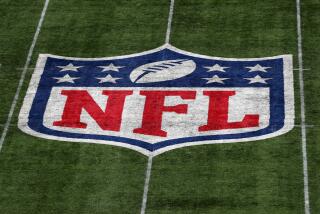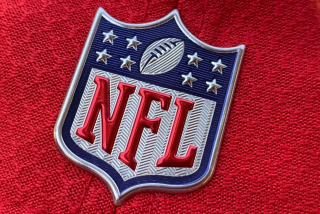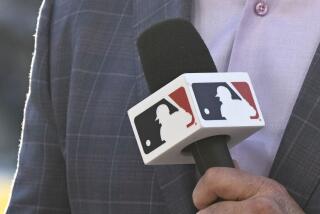NFL Antitrust Q&A: What’s going in labor conflict
- Share via
Unable to decide how to divide $9.3 billion a year in revenue, NFL owners and players ended negotiations on March 11 and the NFLPA decertified, relinquishing its right to represent the players. The next day the owners locked out the players.
The players then filed a federal antitrust lawsuit against the NFL, requesting an injunction that would keep the league from engaging in a lockout. The hearing for that case is scheduled for Wednesday in front of U.S. District Judge Susan Richard Nelson in Minnesota.
A look at the NFL labor crisis heading into this key hearing:
The Basics
What’s this about?
Money! Yes, there are ancillary issues — all money-related — about an 18-game regular season, retired players and safety of players, but the crux of the fight between the NFL and NFLPA is how to best divide the $9.3 billion in annual revenues the league generates. The NFL has never been more popular, judging by TV ratings, polls, etc.
Under the latest collective bargaining agreement, the arrangement was the owners would get a $1-billion credit off the top for expenses before the remainder was divided roughly 60%-40% in favor of the players.
The owners initially asked for the players to allow an additional $1 billion off the top for a total of $2 billion per year, before dividing the rest of the money. That demand was reportedly whittled to about $350 million per year. It’s the owners’ argument that they need that extra money to invest in the game and “grow the pie” with initiatives such as new stadiums, a team in Los Angeles, international play, new-media opportunities and the like.
What’s behind ‘Open your books’?
The players say: Look at the league and how well it’s doing — does it appear to be struggling? They say if the owners want more money back, they should fully open their books to show their line-by-line expenses and prove that they’re making the most of the previously negotiated $1-billion credit. Their argument: Why accept on face value that these guys are hurting, especially when they’ve lied to us in the past?
The owners say: We’re giving more information than we’ve ever given. You know the revenues to the penny, you know the biggest expense (player costs), and we’ll give you the average profitability of teams over the past five seasons. That should be enough. What’s more, when we offered you those profitability numbers in mediation, you flat turned them down. Why would you do that if you truly want to know more about the books?
Why is it important to the NFL to have the NFL Players Assn. acting as a union?
In order for the league’s 32 teams to operate in a collective way and not be subject to antitrust laws, there has to be a union on the other side. Without a union, the teams can’t do the simplest things, such as restrict free agents, hold a draft or decide on a salary cap, because all could be considered “restraint of trade” under antitrust laws. So, to collectively bargain, there needs to be a union representing the players on the other side of the table.
So why did the union decertify?
It doesn’t want the league to lock out the players. If there’s no union, the league is subject to antitrust laws. Decertifying is saying: We’re not a union and — this is important — we don’t plan to re-form as a union again. The NFLPA now considers itself a trade association, and it’s no accident you haven’t heard a peep lately from union head DeMaurice Smith.
What’s the NFL’s argument to that?
The union didn’t decertify. It’s just doing that to gain leverage at the negotiating table, which isn’t permitted. The courts should still consider it a union, and therefore the players are still subject to being locked out. Simple as that.
Why does the league want a lockout anyway?
A lockout is a tool to effect change in a labor fight, the counterbalance to a strike. The rationale is the owners can force the players to do a deal if they can start withholding their paychecks.
Can’t we all just get along?
The sides spent 17 days in nonbinding mediation at the Federal Mediation and Conciliation Services in Washington, D.C., with mediator George H. Cohen going back and forth, furiously working to strike a deal. That was a longshot, anyway, and most likely a way for both sides to show they negotiated in good faith. Both the union and the NFL walked away saying the other side was hopelessly dug in. The sides did agree twice to extend mediation though, pushing back the CBA deadline first by one day, and then by seven.
How did it end?
On March 11, the union decertified. It simply handed a letter to the NFL and announced the move. Shortly thereafter, a group of nine high-profile players — led by Tom Brady, Peyton Manning and Drew Brees — filed a class-action antitrust lawsuit in federal court to get an injunction that would force the NFL to continue football operations, to not lock out the players.
At midnight, the league announced it had locked out the players.
Why did the league have to lock out the players at that point?
First of all, it planned to use the lockout strategy all along. Also, if the decertification was legitimate — and that’s up to the National Labor Relations Board and/or the federal courts to decide — then the league would be subject to antitrust laws and the accompanying triple damages if it did anything collectively. Locking out at that point is akin to putting your hands up when you get pulled over by the police. That way the officer knows you’re not reaching for anything in your glove compartment.
Federal Court
What happens Wednesday?
There will be a hearing for the Brady vs. NFL antitrust case in the St. Paul, Minn., courtroom of Judge Nelson. Nobody is banking on that decision coming right away. Whoever wins at this stage, though, will have a significant advantage going forward.
What do the players want?
They want an injunction to force the NFL to end the lockout and continue football operations. Their argument is they are no longer represented by a union, and therefore a lockout would be in violation of antitrust laws.
What do the owners want?
They want the lockout to stay in place. They’re also waiting on word from the NLRB on the “sham decertification” case. It’s the NFL’s argument that the federal courts should wait on that too, before issuing a ruling.
If the players win, what’s likely to happen?
With the lockout lifted, things would return to some semblance of normal, with free agency, minicamps, training camps and eventually the season. The NFL would probably put in place the same rules of operation it used in 2010, because those rules were collectively bargained for and agreed to by the players when they were represented by a union. Meanwhile, the antitrust case would chug along in the background, and it could take years to resolve that in the courts.
And if the owners win?
Assuming that decision were to hold up on appeal — and remember, everything will be appealed by the losing side from now on — the owners would have significant leverage heading into the summer. The sides would eventually strike a deal, but it might mean the players would miss some paychecks (because of missed regular-season games) along the way.
twitter.com/LATimesfarmer
More to Read
Go beyond the scoreboard
Get the latest on L.A.'s teams in the daily Sports Report newsletter.
You may occasionally receive promotional content from the Los Angeles Times.











